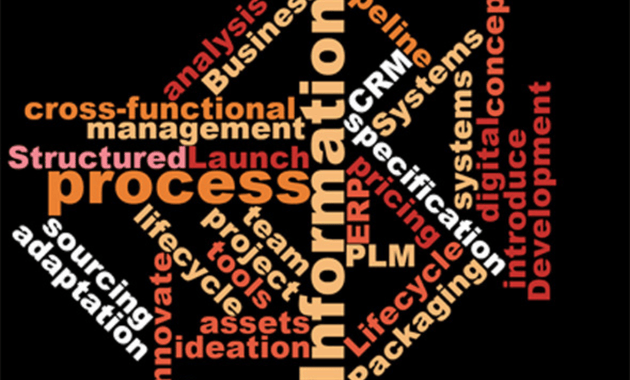Structured Product Development and Management of Product Information
There is a constant and relentless challenge to innovate and introduce the next range of products to the market along with the expected digital assets to support the sales and marketing activities of both the company, their channel partners, and their customers. Structured product development is key for industries which are driven by seasonality where a high percentage of new items are launched or released on a seasonal or more regular basis. The lifecycle of these products is relatively short from concept to launch to retirement and obsolescence.
Some companies may not have a defined structure or process for product development. A structured approach may be required as a company grows and the responsibility for product development moves beyond a relatively small group of people, and as the number of stakeholders involved increases.
A structured product development process allows an organisation to establish a consistent approach to product development which can be implemented, reviewed, adapted and improved. This is key for management of the innovation pipeline, the timeline, the tasks required, and the deliverables at each stage of the product lifecycle.

Product development steps may include:
- Product ideation and concept evaluation
- Business analysis to verify the product with the market
- Product sourcing, product development or product adaptation
- Packaging development
- Finalise product specification, landed costs, and product pricing
- Sample and limited production runs
- Test, evaluation, certification
- Sign-off on product and packaging
- Get product into stock
- Launch product
Structured product development activity may require the establishment of a cross-functional team to represent the various business functions and geographies and to complete the tasks required during the development process. Best practice may also require the establishment of a separate governance and approval team, typically a group of senior executive management resources, with the responsibility to make approval or rejection decisions regarding new product development and also to ensure that the development team are compliant with the agreed product development process as defined for that organisation.
Product development has traditionally been managed, with varying degrees of success, through project management tools, excel spreadsheets, electronic file share, document management and other systems. It requires a high level of oversight and coordination to manage these disconnected tools.
Modern ERP and CRM systems can support the setup of structured processes or workflows to support the product development process. These workflows can be used to define the required product development phases, activities, and deliverables for each phase of the process. They also provide functionality for alerts and electronic sign-off by authorised individuals at phase or milestone reviews. Product information can be setup and updated directly as field values or attributes in the material master of the ERP system. Some solutions allow product information to be accessed by links to files stored in electronic file management solutions.
In today’s marketplace, there are a growing number of digital assets that are required to support Product Development, Marketing, Sales, and Operations activities.
Digital documents and data that might be stored in a Product Information Management solution may include product number and description, product costs, target pricing, technical product specification data sheets and photographic images and video. Other non-product related digital marketing assets such as company brand collateral including logos, building signage, business cards, email signatures, and other collateral needs to be managed.
Product Development and Marketing teams are looking towards alternative specialised best of breed solutions for Product Lifecycle Management (PLM) and Product Information Management (PIM) as their needs and requirements become more complex. A combination of structured processes and best of breed PLM and PIM systems should enable the realisation of the following benefits:
- Improved management of product development pipeline
- Better and consistent alignment of product and business strategy
- Improved control through task management and phased reviews to verify design and market assumptions
- Shorter and more predictable development cycles
- Improved ability to meet launch dates and manage market expectations
- Reduction in the cost of late product launches.
Integration with ERP and CRM solutions and the transfer of data also need to be considered. The security features of these applications, data governance and the change management process will ensure that there is a co-ordinated and controlled transfer or change of data between the PLM, PIM, and the ERP system during the lifecycle of a product.
This blog was written by Justin May, Principal Consultant at Lumenia. For further information on Lumenia or on Structured Product Development please send an email to Justin May.


